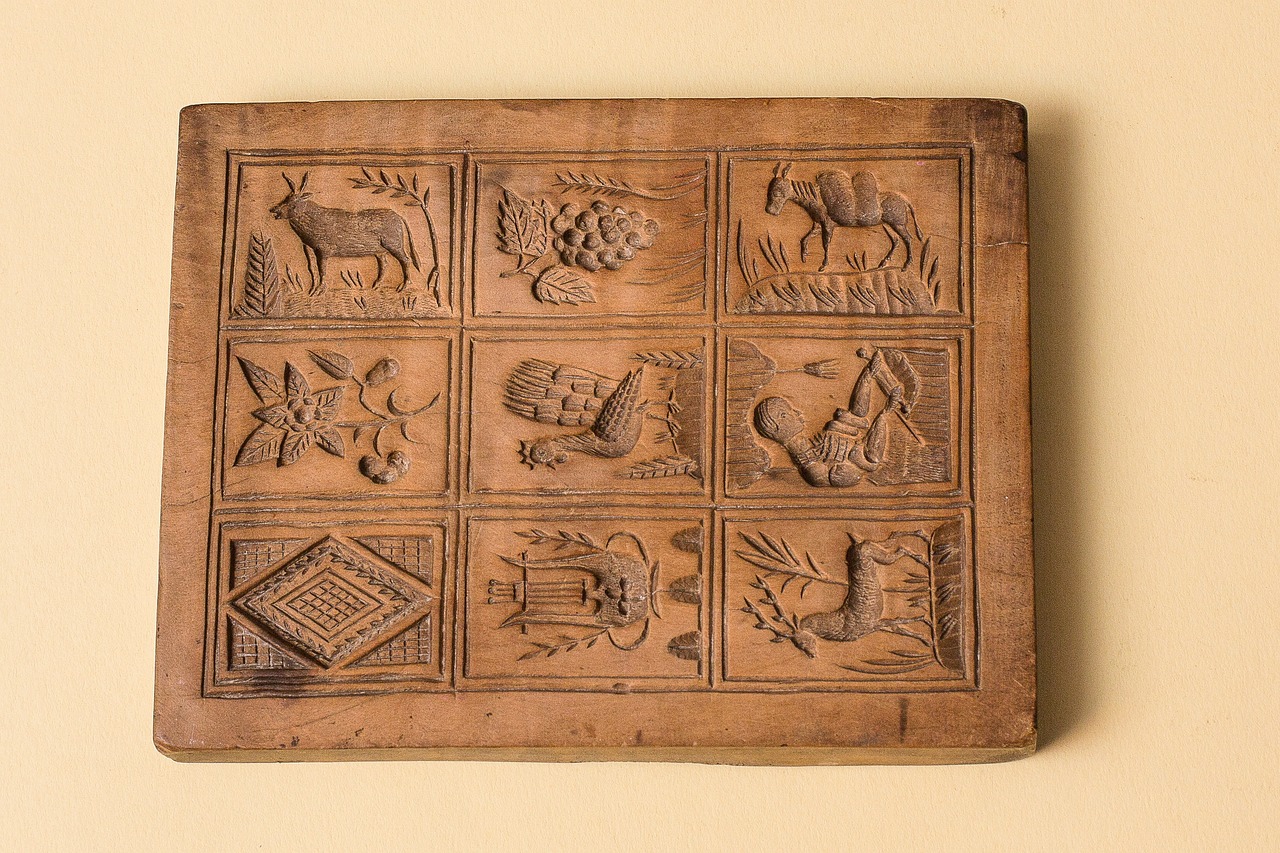
The world of confectionery is replete with treats that not only tantalize the taste buds but also carry with them a wealth of cultural history. Among these historic delights is the Springerle cookie, a traditional German biscuit known for its distinctive embossed design and anise flavor. In this comprehensive exploration, we delve into the storied past of Springerle and provide a time-honored recipe that will allow you to recreate this culinary masterpiece in your own kitchen.
The Historical Tapestry of Springerle
Springerle’s origins can be traced back to the medieval period in the Southwestern regions of Germany, notably in Bavaria and Swabia. The name “Springerle” itself has an interesting etymology, deriving from the German word “springen,” which translates to “to jump” or “to leap.” This is thought to refer to the leavening effect that causes the cookie to “spring up” while baking.
These cookies were more than mere morsels of sustenance; they were artistic canvases and tools of storytelling. Initially, they were closely tied to religious and festive occasions, especially Christmas and New Year celebrations. The intricate designs pressed into Springerle cookies often included biblical scenes, symbols of good luck, and representations of regional folklore. In many ways, these cookies served as edible pieces of art and storytelling.
The art of making Springerle was traditionally a family affair, with secret recipes and wooden molds handed down through generations. The molds themselves were handcrafted by skilled artisans and were considered valuable family heirlooms. Some molds featured multiple images that were used to teach children stories from the Bible and local myths.
The Cultural Evolution of Springerle
As Springerle traversed through time, its popularity spread beyond Germany to Switzerland, Austria, and Alsace. Each region imparted its own variations and nuances to the recipe, though the core elements—fine flour, eggs, sugar, and anise—remained largely consistent.
The tradition of baking Springerle has also evolved. Originally baked for religious feasts, they gradually became associated with secular events and milestones such as weddings, births, and anniversaries. The cookies were, and still are, seen as emblems of good fortune and prosperity.
The Springerle Recipe: A Blend of Simplicity and Artistry
Now, let’s transition from the rich history to the equally rich experience of making Springerle yourself. The following recipe is steeped in tradition, a testament to the simplicity and precision that these cookies demand.
Ingredients:
- 4 large eggs, room temperature
- 2 cups of granulated sugar
- 4 cups of all-purpose flour, sifted, plus more for dusting
- 1/2 teaspoon of baking powder
- 2 tablespoons of anise seeds or anise extract
- Zest of one lemon (optional for additional flavor)
- Pinch of salt
Equipment:
- Classic Springerle mold or rolling pin
- Baking sheets
- Parchment paper
- Cooling rack
Instructions:
- Prepare the Dough:
- In a large bowl, beat the eggs until they are light and frothy. Gradually add the granulated sugar and continue beating for 15 to 20 minutes until the mixture is thick and pale.
- If using lemon zest, incorporate it into the egg mixture for a hint of citrus.
- In a separate bowl, whisk together the sifted flour, baking powder, and a pinch of salt.
- Gradually mix the dry ingredients into the egg mixture to form a stiff dough. If the dough is too sticky, add a bit more flour until it is manageable.
- Mold the Cookies:
- Lightly flour your Springerle mold or rolling pin. Divide the dough into portions that will fit your mold.
- Press the mold firmly into the dough, then carefully remove to reveal the design. Use a sharp knife to trim any excess dough around the design.
- If you are using anise seeds, sprinkle them on the parchment-lined baking sheets before placing the cookies on top, allowing the flavor to infuse from below.
- Drying:
- Place the molded cookies on the prepared baking sheets and allow them to dry uncovered for 12 to 24 hours. This crucial step helps the designs set, ensuring they stay intact during baking.
- Baking:
- Preheat your oven to 300°F (150°C).
- Bake the Springerle for 15 to 18 minutes, keeping a close eye on them. The cookies should remain pale, with the base turning just a slight golden color.
- Do not let them brown, as traditional Springerle are prized for their white appearance.
- Cooling:
- Remove the cookies from the oven and transfer them to a cooling rack. Springerle are best enjoyed after they have had time to set, typically a couple of days, which allows the flavors to develop fully.
- Storing:
- Springerle can be stored in an airtight container for several weeks. They actually improve with age, as the anise flavor intensifies and the cookie becomes more tender.
Springerle Today: A Living Tradition
In today’s culinary landscape, Springerle remains a cherished holiday tradition, with modern twists occasionally added, such as the incorporation of different flavors or the use of colored dough. However, the heart of Springerle lies in its history—a story of family, culture, and artistry that continues to be baked into each cookie.
The making of Springerle is more than following a recipe; it’s about embracing a piece of history and sharing it. Whether you are a seasoned baker or a curious novice, the act of creating these cookies is a way to connect with the past and bring its flavors to life in the present.
The narrative of Springerle is a testament to the enduring power of culinary traditions and their ability to transcend time. It’s a narrative that’s baked into every delicate, embossed treat—a story of art, family, and the simple joy of sweet flavors. As you embark on your own Springerle-making journey, remember that you are not just crafting cookies; you are perpetuating a legacy that has been savored for centuries. Enjoy the process, indulge in the outcome, and cherish the connection to a rich tapestry of cultural history that Springerle offers with every bite.
